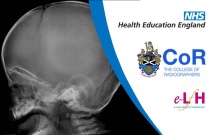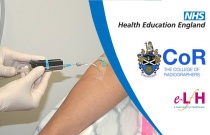Mechanism of General Anaesthetic Action
Shelley Barnes, Jeff Handel, Madeleine Storey
0.50 Hours
This session describes the ways in which general anaesthetic agents are hypothesized to exert their effects at the cellular and molecular level.
Left Ventricular Impairment - Anesthesiology
Dave Murray, Conor Gillan
Left ventricular dysfunction and the subsequent development of congestive heart failure is the final common pathway for a number of different cardiac disorders. This session will discuss the symptoms and signs of left ventricular dysfunction, how it is diagnosed and how its presence affects an anaesthetic plan.
Basic Respiratory Investigations and Lung Function Tests
Steve Graham
0.50 Hours
This session will describe some of the basic respiratory investigations, and explain the relevance of the results obtained.
Fractures and Pathology
Dorothy Keane
0.50 Hours
This session discusses terminology in relation to image interpretation of skeletal radiographs. This will enable the learner to describe fractures, dislocations, pathology and normal variants.
Image Interpretation - Adult Skeleton (X-ray): Foot - Session 3
Kevin Harvell and Kathy Dewar
0.50 Hours
A self-evaluation quiz based on Image Interpretation - Adult Skeleton (X-ray): Foot - Sessions 1 and 2.
Image Interpretation - Adult Skeleton (X-ray): Knee - Session 3
Tracy O’Regan
0.50 Hours
A self-assessment quiz based on Image Interpretation - Adult Skeleton (X-ray): Knee - Sessions 1 and 2.
Image Interpretation - Adult Skeleton (X-ray): Pelvis - Session 2
Joanne Hargreaves
0.50 Hours
A self-assessment exercise based on Image Interpretation - Adult Skeleton (X-ray): Pelvis - Session 1.
Image Interpretation - Adult Skeleton (X-ray): Bones of the Thorax - Session 1
Lisa Field
0.50 Hours
This session will look at injuries related to the bones of the thorax. It will focus on identifying anatomy demonstrated on both diagrams and radiographs, and offer examples of radiographic technique. Mechanisms of injury (MOI) will be discussed to develop a knowledge base in clinical presentations. Common fractures, dislocation....
Image Interpretation - Adult Skeleton (X-ray): Bones of the Thorax - Session 2
Lisa Field
0.50 Hours
A self-assessment exercise based on Image Interpretation - Adult Skeleton (X-ray): Bones of the Thorax - Session 1.
Image Interpretation - Plain X-rays of the Adult Chest: Introduction
Sally Athey and Dorothy Keane
0.50 Hours
Principles of safe practice related to image interpretation will be covered in this session, along with an overview of the chest image interpretation project. Terminology will be discussed along with advice on how to structure a written interpretation.
Image Interpretation - Plain X-rays of the Adult Chest: Self-evaluation
Sally Athey and Dorothy Keane
0.50 Hours
A self-evaluation session designed to support you in assessing your image interpretation skills and report writing style.
Image Interpretation of the Paediatric Skeleton: Fractures
Dorothy Keane
0.50 Hours
This session discusses fractures that are specific to children. The Salter Harris Classification System is outlined, along with a systematic approach to assessing images. A series of paediatric radiographs are used to evaluate your interpretation skills.
Image Interpretation of the Paediatric Skeleton: Suspected Physical Abuse - Case Study 3
Claire Giles
0.50 Hours
This self-evaluation session presents a case study for review regarding paediatric suspected physical abuse.
Image Interpretation of the Paediatric Skeleton: Suspected Physical Abuse - Case Study 6
Claire Giles
0.50 Hours
This self-evaluation session presents a case study for review regarding paediatric suspected physical abuse.
Morton's Neuroma - Radiology
Simon Ostlere
0.50 Hours
This session discusses imaging Morton's neuroma, differential diagnosis and injection technique.
Image Interpretation - Nuclear Medicine: Bone Scanning
Gopinath Gnanasegaran
0.50 Hours
This session will describe the principles of nuclear medicine bone scanning. It will explain the use of planar, SPECT and SPECT-CT images and give an overview of their clinical applications.
Image Interpretation - Radiographs of the Paediatric Chest: Neonatal Disorders - Session 2
Nick Woznitza
0.50 Hours
This session will focus on the pathologies commonly encountered on a neonatal chest and abdominal. It will describe the pathological processes behind each disease, highlight clinical signs and allow recognition of their radiographic appearance.
Image Interpretation - Obstetric Ultrasound: Normal First Trimester
Karen Heggs
0.50 Hours
This session considers the sonographic appearances of normal early pregnancy. It will include appearances at different gestational ages and describe pitfalls to avoid. Tips on reporting will be offered.
Image Interpretation – Magnetic Resonance Imaging: Wrist and Hand - Session 1
Graeme Strong
0.50 Hours
This session addresses the normal anatomy of the wrist and hand on magnetic resonance imaging (MRI). The clinical indications for MRI and MRI techniques employed for image acquisition will be addressed. An overview of alternative imaging modalities will be provided.
Image Interpretation - Magnetic Resonance Imaging: Wrist and Hand - Session 2
Graeme Strong
0.50 Hours
This session addresses the clinical and imaging evaluation of the wrist and hand, with particular reference to magnetic resonance imaging (MRI) appearances.
Image Interpretation - Magnetic Resonance Imaging: Wrist and Hand Session 3
Dorothy Keane
0.50 Hours
A self-evaluation session based on magnetic resonance imaging (MRI) of the wrist and hand. It contains questions on anatomy and pathology, MRI techniques used and interpretation of MRI images of the wrist and hand.
Fluoroscopic Investigations of the Small Intestine - Radiology
Saminah Yunis
0.50 Hours
This session will explore the anatomy of the small intestine and the role of fluoroscopy in relation to other imaging modalities. Tips on equipment use, technique and reporting will be offered.
Nasogastric Tube Placement: Using Chest Radiographs to Identify Nasogastric Tube Placement
Natasha Hayes
0.50 Hours
This session will cover the main principles of correctly identifying the nasogastric (NG) tube position on a chest radiograph. It will also include how to tell if the NG tube should be advanced and the safety issues surrounding this.
Nasogastric Tube Placement: Safe Practice and Clinical Governance
Natasha Hayes
0.50 Hours
This session will highlight clinical governance and safety issues involved with assessing radiographs for the correct nasogastric (NG) tube placement. Systems to promote safe practice will also be outlined.
HIV in Pregnancy
Annemiek de Ruiter, Harriet Wallace, Yvonne Gilleece
This session aims to provide a comprehensive overview of HIV in pregnancy. It looks at vertical transmission rates, with or without interventions, maternal antiretroviral therapy, the infant testing schedule and the epidemiology of pregnant women living with HIV in the UK.
























